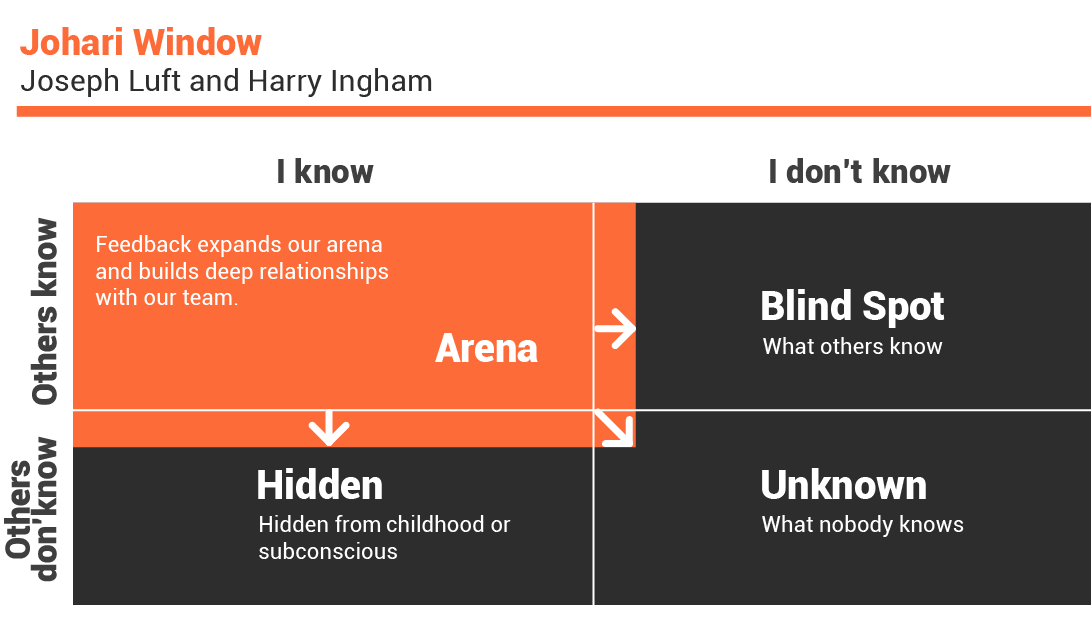culture design starts with you
Conclusions &
Recommendations
What can you do to design culture?
Culture is composed by individual behaviours, environment and emotions. It is how we you do things around here.
Culture starts with you. Then it is shared with a colleague, then a team, then an organisation.
By being aware of how much we control as individuals and how much we don't we will come closer to designing the cultures we want at work.
Culture starts with you. Then it is shared with a colleague, then a team, then an organisation.
By being aware of how much we control as individuals and how much we don't we will come closer to designing the cultures we want at work.

From the findings of the testing phase and the industry discussion I've developed recommendations. I've also created tools to help individuals through the recommendations since I saw during testing that experiential learning, a bit of theory (backed with documents) and repetition of exercises and explanations is the best way to design the cultures we need at work. When people work together in workshops listening is not their top priority, so it's important to repeat important information.
1
TARGET: YOU
Employees need to
assume responsibility
assume responsibility
No one is coming to save you
It is a two-way street. On the one hand an individual needs to work on developing VEUG (vulnerability, emotional intelligence, uncertainty acceptance and growth mindset), but on the other hand the organisation has responsibilities too. The company must facilitate the right leadership and mindset that supports employees on their VEUG journey.
You have the responsibility of speaking up for yourself
You can and should tell someone how their actions affected you. Embrace "the I message" and take responsibility for your own happiness at work (and potentially outside of work too).
During the testing phase of this project I saw that the most meaningful/impactful/long-lasting changes happened when individuals were courageous enough to analyse themselves and look at what was impacting them inside and outside of work. Giggypop's leader for example, Alice, took the Johari Window tool from the session and applied it in her daily life.
You have the responsibility of speaking up for yourself
You can and should tell someone how their actions affected you. Embrace "the I message" and take responsibility for your own happiness at work (and potentially outside of work too).
During the testing phase of this project I saw that the most meaningful/impactful/long-lasting changes happened when individuals were courageous enough to analyse themselves and look at what was impacting them inside and outside of work. Giggypop's leader for example, Alice, took the Johari Window tool from the session and applied it in her daily life.
Johari Window and its application beyond the workplace
(click to view article by Joseph Luft, creator of the theory behind it)
(click to view article by Joseph Luft, creator of the theory behind it)
I also saw individuals take feedback from colleagues on board and reflect on what they'd like to change about their lives. Chris Webb left his job and became full time co-founder of Giggypop two weeks after our session on January 24th - he had been thinking about being more bold in his life and he received encouragement and feedback on the subject. Maybe a coincidence. Maybe not.
Using Marshall Rosenberg's 4 step non violent communication model, I've developed a tool called 'Get real with Marshall'. This tool looks to address issues identified in previous chapters of this project and instead help individuals:
• Stop holding feedback in
• Stop blaming the organisation or their manager for the way they feel
• Start developing the identified leadership skill of vulnerability
• Set an example to peers about how to address concerns
You have the responsibility of scanning your environment
Have you thought about the aspects of your environment that may be affecting you? Temperature, light, seating arrangements? They impact your body and mind and it is your responsibility to evaluate how you feel about them. What can you do to improve the situation? Your company's aim should be to facilitate the right leadership and mindset to accommodate your needs as an employee.
Using Marshall Rosenberg's 4 step non violent communication model, I've developed a tool called 'Get real with Marshall'. This tool looks to address issues identified in previous chapters of this project and instead help individuals:
• Stop holding feedback in
• Stop blaming the organisation or their manager for the way they feel
• Start developing the identified leadership skill of vulnerability
• Set an example to peers about how to address concerns
You have the responsibility of scanning your environment
Have you thought about the aspects of your environment that may be affecting you? Temperature, light, seating arrangements? They impact your body and mind and it is your responsibility to evaluate how you feel about them. What can you do to improve the situation? Your company's aim should be to facilitate the right leadership and mindset to accommodate your needs as an employee.

2
TARGET: YOU
Leaders and employees need to develop the leadership
skills for Culture Design
skills for Culture Design
Few will succeed without them in the workplace of the future
At the beginning of this project I asked what leadership qualities should people develop in order to be a good culture designer. Having asked the question to the industry, researched academic opinion and taken the theory into practice, I can conclude that the leadership skills to develop are:
• Vulnerability
• Emotional Intelligence
• Uncertainty acceptance
• Growth mindset
Employees demanded them from their leaders and people who worked on developing these during the testing phase were able to design a culture that helped them work better. To work on developing these, you can use "Veug, strike a pose" tool that I came up with. This tool looks to hack a situation, evaluate what assumptions we're making and run it against each leadership skill mentioned above.
You can also use use "What do you need", an exercise that can be individual or in a group to talk about what you need at a human level.
• Vulnerability
• Emotional Intelligence
• Uncertainty acceptance
• Growth mindset
Employees demanded them from their leaders and people who worked on developing these during the testing phase were able to design a culture that helped them work better. To work on developing these, you can use "Veug, strike a pose" tool that I came up with. This tool looks to hack a situation, evaluate what assumptions we're making and run it against each leadership skill mentioned above.
You can also use use "What do you need", an exercise that can be individual or in a group to talk about what you need at a human level.

I spoke to Nehal Ahmed (pictured right), UX designer in Dubai, about the above. She noticed she'd never thought of culture being in her hands as an employee. She "always thought of culture top-down". I told her about the leadership qualities she could work on.
Nehal reflected upon VEUG. She said she wished she'd known about this when she was trying to design culture at her old agency. In that ocassion she re-branded the company, hoping to inspire others, but the change was not long-lasting unfortunately.
Nehal reflected upon VEUG. She said she wished she'd known about this when she was trying to design culture at her old agency. In that ocassion she re-branded the company, hoping to inspire others, but the change was not long-lasting unfortunately.

Nehal Ahmed, UX designer in Dubai
Speaking about culture
3
TARGET: YOU AND THOSE AROUND
Organisations need to be emotion-friendly
As everyone in the company works on becoming more vulnerable and uncertainty acceptant, the organisation needs to normalise expressions on emotion on a regular basis and not penalise those expressions with shame.
Crying in the bathroom is not going to cut it in the workplace of the future. If you believe you are living within a culture of suppression, where vulnerability (exposure of emotions) is seen as weakness, you have to think about what impact is that having in your health and general well-being.
In this research, when making time to reflect and digging deep into what emotions were overwhelming people individually, the teams grew more empathy for each other. Giggypop team and I connected when reflecting and that connection stayed present past that workshop.
Our team leader, Alice, normalised emotions and the Giggypop team was able to be empathetic to each other on a things like becoming a co-founding member or not, or choosing to take a step back from the project. We did not snap at each other when we failed to hit certain targets, instead we asked if there was any way we could support each other. Emotional intelligence, emotional exposure and accepting that we cannot leave emotions at work will be crucial to design cultures we thrive in. But working isolated in developing VEUG will not be enough if our workplace (and our leader) is not facilitating the right mindset and examples.
It is obvious in the industry discussions I had that we have been conditioned to not be our fully expressive selves in the workplace. Nehal Ahmed told me about how different it was to freelance from home where she felt "free" versus working in the office where she was "constantly aware of people around her and making sure she behaved in an acceptable manner" (Ahmed, 2016).
Individuals need to evaluate whether or not they can make space for emotions in their daily interactions with colleagues and leaders. If they can't, then they need to notice in which other area of your life (that is not work) are emotions manifesting themselves. Emotions will push through one way or the other according to the research.
What about conflict?
To help individuals with this task, I have created "Susan Wheelan's Bikers Club". Susan Wheelan's four stages of team development changed the game for me and for the teams we shared it with. Understanding in which stage you are with those around you helps you have a more proportional reaction, embrace conflict and work through each stage with an aim set on productivity. Knowing theres a "path" or a wheel you're on, with different stages, helps individuals not avoid conflict, but face it.
In this research, when making time to reflect and digging deep into what emotions were overwhelming people individually, the teams grew more empathy for each other. Giggypop team and I connected when reflecting and that connection stayed present past that workshop.
Our team leader, Alice, normalised emotions and the Giggypop team was able to be empathetic to each other on a things like becoming a co-founding member or not, or choosing to take a step back from the project. We did not snap at each other when we failed to hit certain targets, instead we asked if there was any way we could support each other. Emotional intelligence, emotional exposure and accepting that we cannot leave emotions at work will be crucial to design cultures we thrive in. But working isolated in developing VEUG will not be enough if our workplace (and our leader) is not facilitating the right mindset and examples.
It is obvious in the industry discussions I had that we have been conditioned to not be our fully expressive selves in the workplace. Nehal Ahmed told me about how different it was to freelance from home where she felt "free" versus working in the office where she was "constantly aware of people around her and making sure she behaved in an acceptable manner" (Ahmed, 2016).
Individuals need to evaluate whether or not they can make space for emotions in their daily interactions with colleagues and leaders. If they can't, then they need to notice in which other area of your life (that is not work) are emotions manifesting themselves. Emotions will push through one way or the other according to the research.
What about conflict?
To help individuals with this task, I have created "Susan Wheelan's Bikers Club". Susan Wheelan's four stages of team development changed the game for me and for the teams we shared it with. Understanding in which stage you are with those around you helps you have a more proportional reaction, embrace conflict and work through each stage with an aim set on productivity. Knowing theres a "path" or a wheel you're on, with different stages, helps individuals not avoid conflict, but face it.

4
TARGET: YOU AND THOSE AROUND
Individual and team needs are different
Differentiate and develop individual, team and company values separately - in different days and if possible different environments.
Draw a line of separation between individual, team, organisation and the work
A Culture Design session is for individuals to start thinking about bigger things than just work. Talking about personal values and company values for example at the same time is confusing. Both sets take a long time to decipher and a Culture Design session is not about company values.
Discuss what really matters to each one of you in the team
It is important to take time away from work to discuss the more human side of the team. Trying to bring in work related discussions into a Culture Design workshop hinders the discovery process. It pulls away from the organisation towards what the organisation outputs.
Instead a Culture Design session wishes to develop from the organisation towards the individual and her/his world. It is important to remember we are discussing behaviour, emotions and environment, not the "launch of our MVP" or "what we need to do for Demo Day" - as discovered with Giggypop. It's easy to use this time together to jump into work chats, but we shouldn't. We will "speak about work on Monday" but during a Culture Design session we must strive to focus on the individuals present and the way they are starting culture from inside their bodies and minds.
To help you in this process, you can also use the 'What do you need' tool.
A Culture Design session is for individuals to start thinking about bigger things than just work. Talking about personal values and company values for example at the same time is confusing. Both sets take a long time to decipher and a Culture Design session is not about company values.
Discuss what really matters to each one of you in the team
It is important to take time away from work to discuss the more human side of the team. Trying to bring in work related discussions into a Culture Design workshop hinders the discovery process. It pulls away from the organisation towards what the organisation outputs.
Instead a Culture Design session wishes to develop from the organisation towards the individual and her/his world. It is important to remember we are discussing behaviour, emotions and environment, not the "launch of our MVP" or "what we need to do for Demo Day" - as discovered with Giggypop. It's easy to use this time together to jump into work chats, but we shouldn't. We will "speak about work on Monday" but during a Culture Design session we must strive to focus on the individuals present and the way they are starting culture from inside their bodies and minds.
To help you in this process, you can also use the 'What do you need' tool.

5
TARGET: ORGANISATION
Self knowledge and team knowledge is everything
The ultimate goal is to develop empathy and psychological safety
Initially it can feel uncomfortable to not know enough about your colleagues, colleagues you probably have been working with for years. But this is good sign. It means this process is overdue is necessary.
Having a Culture Design sessions with the 'reflection' tool is a way to get to know each other better. Culture is individual to each person and getting to know more about their worlds will help you build a better culture together.
During the testing done for this project, I experienced Culture Design activities around being present and acknowledging others emotions which brought my team and I closer. Repeating these activities meant there was nowhere to hide from each other.
Being a culture designer means being open to discover more about ourselves as much as discovering who our teammates really hard underneath their job title. Use the 'Johari Window' to reinforce this concept and explain to peers how important it is to 'expand our arena'.
Having a Culture Design sessions with the 'reflection' tool is a way to get to know each other better. Culture is individual to each person and getting to know more about their worlds will help you build a better culture together.
During the testing done for this project, I experienced Culture Design activities around being present and acknowledging others emotions which brought my team and I closer. Repeating these activities meant there was nowhere to hide from each other.
Being a culture designer means being open to discover more about ourselves as much as discovering who our teammates really hard underneath their job title. Use the 'Johari Window' to reinforce this concept and explain to peers how important it is to 'expand our arena'.

Final thoughts
This research could be expanded if the Culture Design effort was taken away from the creative and innovative industry and into another environment. For example charities or governmental organisations. It would be interesting to see how teams that are foreign to the creative practice react to a design thinking approach to culture. If they are able to follow the recommendations above and embrace VEUG.
During this project, I feel I impacted the working lives of many people through my research and conversation. The impact went beyond the industry and took over friendships and family relationships - applying VEUG and being aware of personal needs versus group needs made a very big difference in the cultures I inhabit. I believe there is an opportunity to extend this research and see if culture can be designed not only at work but also in our personal lives by following the above recommendations.
Finally, I think Culture Design is an agreement between an organisation and an individual to work together on the big challenge of self discovery and clear communication. I think it can be implemented and be successful with consistency and team alignment.
During this project, I feel I impacted the working lives of many people through my research and conversation. The impact went beyond the industry and took over friendships and family relationships - applying VEUG and being aware of personal needs versus group needs made a very big difference in the cultures I inhabit. I believe there is an opportunity to extend this research and see if culture can be designed not only at work but also in our personal lives by following the above recommendations.
Finally, I think Culture Design is an agreement between an organisation and an individual to work together on the big challenge of self discovery and clear communication. I think it can be implemented and be successful with consistency and team alignment.
FEEDBACK
Industry thoughts on my infographics

"Hey Rita, saw your VEUG replies on [Hyper Island's CEO] post today. I digg your thinking and have already applied much of it at ustwo where I am in charge of Leadership and Cultural dev. Fancy a chat about your work?"
Max Samuels,
Global Leadership & Cultural Development Director at Ustwo™
(Global)
Global Leadership & Cultural Development Director at Ustwo™
(Global)

"The infographic is pretty spot on. I spent years trying to fit into agency culture and gave myself a very hard time when I couldn't fit in. Now I know better and share myself more, by trying to create a culture that's not dictated by management."
Gillian Benneh,
Digital Project Manager at Digitas LBi
(United Arab Emirates)
Digital Project Manager at Digitas LBi
(United Arab Emirates)

Very good looking and clever! One thing that's important as well is to see the CEO/boss as a human being too, especially in change situations etc - easy to make them the enemy.
Also missing women in the illustration!
Also missing women in the illustration!
Sofie Andersson,
Digital Project Manager and Entrepreneur
(Sweden)
Digital Project Manager and Entrepreneur
(Sweden)

"Why didn't I meet you before! I did not know people could think like that! I get it - the individual might see the same thing differently. I never thought of it like that..."
Nehal Ahmed,
UX Designer at Digitas LBi
(United Arab Emirates)
UX Designer at Digitas LBi
(United Arab Emirates)

Some people are more willing to go through a self discovery or identification of what they need independently... but not everyone will do it. I "buy into what you're saying" and I think that if you frame it as "something we do at work" it is more likely for people to buy into it and do it.
Andy Young,
Design & Innovation Consultant
(UK)
Design & Innovation Consultant
(UK)

"I am really curious to hear more about your process, learnings and future predictions - apart from what we can read on your site"
Helene Schalckh,
Digital Business Creative and Co-Organizer at SheSays Stockholm
(Sweden)
Digital Business Creative and Co-Organizer at SheSays Stockholm
(Sweden)


